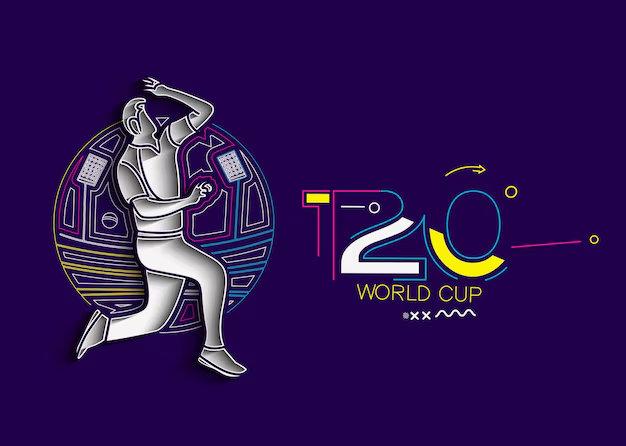The path to becoming a professional athlete is not a straight line. It is a journey filled with passion, perseverance, setbacks, and triumphs. While every athlete’s story is unique, they all share a common thread—dedication to their craft and a relentless pursuit of excellence. From humble beginnings in local sports clubs to the bright lights of global stadiums, the road from grassroots to glory is one of hard work, sacrifices, and unwavering focus. In this article, we will explore the various stages of an athlete’s journey, the challenges they face, and the key factors that contribute to their success.
The Early Days: Discovering Passion and Talent
Every professional athlete starts somewhere, and for most, that somewhere is at the grassroots level. These early days often involve playing sports with friends or joining local sports clubs. It’s here that an athlete discovers their passion and begins to realize their potential. Some may have natural talent, while others may need to develop their skills over time. What sets future professionals apart is their unwavering commitment to improvement, even when faced with competition from others who may have more experience or natural ability.
For many athletes, the journey begins with the support of family members or mentors who recognize their potential and encourage them to pursue their dreams. Early training, whether in a team or as an individual, teaches valuable lessons in discipline, teamwork, and perseverance. It is in these formative years that athletes often learn the foundation of success: hard work pays off.
The Development Stage: Overcoming Challenges
Once an athlete has discovered their passion, they must continue developing their skills, often through structured training programs or competitive leagues. This stage can be challenging, as it requires long hours of practice, mental toughness, and overcoming failures. Many athletes face challenges such as injuries, self-doubt, and the pressure to perform at higher levels.
This phase is where athletes begin to distinguish themselves from their peers. Coaches and trainers play a crucial role in shaping their growth, pushing them beyond their limits, and fine-tuning their techniques. At the same time, they learn to balance school, work, and family life with their athletic pursuits, a skill that will serve them well in their professional careers.
For some athletes, this is the time when they begin competing at higher levels, such as regional or national competitions. It’s during these competitions that they get their first taste of what it’s like to compete against the best. For many, it’s also when they realize that success requires more than just talent—it requires dedication, sacrifice, and mental strength.
The Breakthrough: Entering the Professional Arena
The breakthrough moment for an athlete can come in many forms—a standout performance in a local tournament, an invitation to a national camp, or a scout from a professional team taking notice. This moment is often the culmination of years of hard work, but it doesn’t guarantee success. Transitioning from amateur to professional sports is a significant leap and presents a whole new set of challenges.
At this stage, athletes face intense competition, both on and off the field. They need to adapt to a professional environment where the stakes are much higher. The training is more intense, the expectations are greater, and the pressure to perform is constant. For many athletes, this is when their resilience is truly tested.
In professional sports, athletes must maintain peak physical condition, which often means adhering to a strict regimen of training, nutrition, and recovery. Mental toughness becomes just as important as physical fitness. Handling criticism, managing expectations, and dealing with setbacks like injuries or poor performances are all part of the journey.
Sustaining Success: The Challenges of Longevity
Once an athlete reaches the professional level, the journey doesn’t stop. In fact, the real challenge begins. The pressure to maintain a high level of performance year after year can be overwhelming. Professional athletes need to constantly push themselves to stay competitive, often adapting their training and strategies to counter new challenges.
One of the most significant hurdles for athletes at this stage is maintaining longevity in their careers. Injuries, aging, and the constant need for improvement can make it difficult to sustain success. However, the best athletes are those who can adapt to these challenges. They invest in their physical and mental health, continuously learn from their experiences, and work with coaches, trainers, and medical professionals to prolong their careers.
Mentorship becomes important in this phase. Experienced athletes often share advice and guidance with younger players, helping them navigate the complexities of professional sports. Additionally, many athletes begin to think about life after their playing careers, investing in skills that will set them up for success once they retire.
The Glory: Achieving Excellence
Reaching the pinnacle of professional sports, whether it’s winning a championship, setting a world record, or earning accolades for exceptional performances, is the ultimate goal for any athlete. However, achieving glory is not just about the recognition or rewards—it’s about the fulfillment of a dream that has been pursued through years of sacrifice, hard work, and determination.
When an athlete achieves greatness, it’s a culmination of everything they have worked for. The accolades, trophies, and fame are just the outward symbols of a much deeper accomplishment: the realization of their full potential. For many athletes, glory also comes with the opportunity to inspire others, especially younger athletes who see them as role models.
Frequently Asked Questions (FAQs)
1. How long does it take to become a professional athlete? Becoming a professional athlete varies from person to person. Some may enter the professional arena as teenagers, while others may take longer, depending on the sport and their development. On average, it may take anywhere from 5 to 10 years of serious training and competition to reach the professional level.
2. What is the most challenging part of becoming a professional athlete? The most challenging part is often dealing with setbacks such as injuries, failures, and the pressure to perform. The mental and physical demands of training at an elite level can also be extremely challenging.
3. What role do coaches play in an athlete’s journey? Coaches are instrumental in developing an athlete’s skills, teaching them the fundamentals of the sport, and pushing them to reach their full potential. They also provide mentorship and guidance through difficult times.
4. How do professional athletes handle pressure? Professional athletes manage pressure through mental conditioning, focus, and support systems, including psychologists, coaches, and teammates. They learn to compartmentalize stress and focus on the task at hand.
5. Do all athletes face injuries? Most professional athletes will face injuries at some point in their careers. The intensity of training and competition increases the risk, but advancements in medical care and recovery techniques have helped athletes recover and maintain their careers longer.
6. What is the role of family and friends in an athlete’s success? Family and friends provide emotional support and encouragement. Their belief in the athlete’s abilities can be a strong motivator during tough times.
7. How can an athlete prepare for life after their career? Athletes can prepare by investing in education, exploring other career opportunities, and developing personal interests outside of their sport. Many athletes also take on roles in coaching, media, or business after retiring.
Conclusion
The journey from grassroots to glory is not easy, but it is one of the most rewarding paths for those who are passionate about their sport. Athletes must navigate challenges, maintain discipline, and possess an unyielding commitment to their dreams. The road to success is long, but for those who persevere, the rewards are not only in the victories but also in the lessons learned along the way.
Key Takeaways
- The journey to becoming a professional athlete involves years of hard work, dedication, and overcoming challenges.
- Athletes must develop mental and physical resilience to handle the pressure and competition at higher levels.
- Coaches, family, and support systems play crucial roles in an athlete’s development and success.
- Success in professional sports is not only about winning trophies but also about personal growth and inspiring others.

